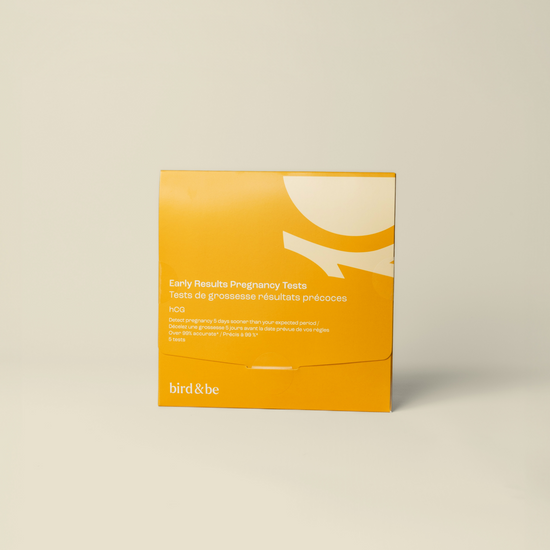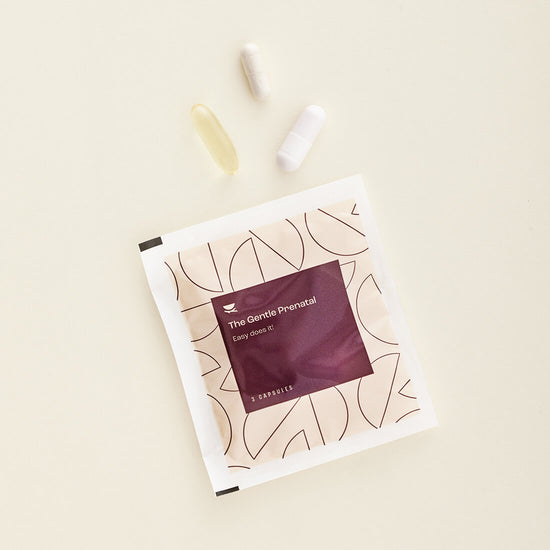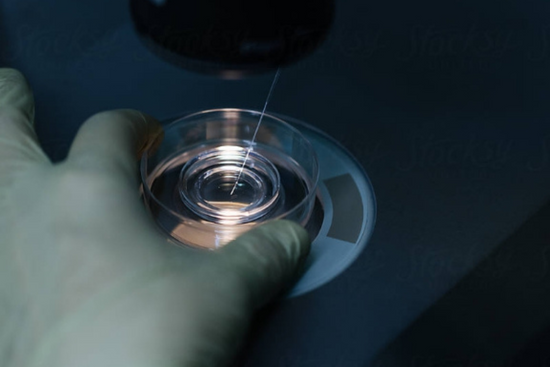When you’re trying to conceive, beta-hCG is an important test—it’s the one that can confirm pregnancy after the two week wait. While those who are conceiving at home likely won’t get a specific level confirmed (just those double lines on an at-home test indicating pregnancy), if you’re undergoing assisted reproductive technology like timed intercourse, IUI or an embryo transfer, you’ll likely have a beta-hCG test scheduled by your doctor with specific levels and numbers to confirm pregnancy. What are those numbers? Here we’re sharing how beta-hCG is measured and what you’ll be hoping for when you do your test.
What is beta-hCG?
Beta-hCG is the name of the blood pregnancy test that detects a hormone called human Chorionic Gonadotropin (hCG). It’s made by the cells of the early developing placenta; as the placenta grows so do levels of hCG. It’s this hormone that is measured on a home pregnancy test. TL;DR: a positive hCG indicates pregnancy and it should continue to rise as the pregnancy progresses.
How is beta-hCG tested?
There are two ways we can test for hCG: urine and blood. The urine test is at-home pregnancy test, whereas the blood test is done in a lab with a doctor’s requisition. Both tests are accurate and work by detecting hCG in your body.
The at-home urine test
The test stick in an at-home pregnancy test contains a reactive paper that you will add a sample of your urine to. If the paper detects hCG (after a few anxious minutes of waiting), you might see a line darken next to the control line, a plus sign, or, if you’re using a digital test, it might say “pregnant.” If there is no hCG in the urine, there won’t be a chemical reaction and you won’t see anything besides the control line (which indicates a negative test result).
Make sure to read and follow the directions exactly as they appear on your test kit. Most tests will tell you to use your first morning pee for testing since hCG levels will be most concentrated at this time (after accumulating overnight). If you can’t test first thing in the morning, make sure not to drink too much water before providing a sample—this can dilute your urine and the hCG might not be as detectable.
The doctor-requisitioned blood test
The blood hCG test is more sensitive than the urine test, and in addition to simply detecting hCG, it measures how much is in your blood. So not only can you find out if you’re pregnant, but you can find out the amount of hCG in your system (measured in IU—international units per milliliter of urine or blood). This is important for your doctor to confirm the pregnancy and to make sure the amount of hCG is appropriate for how far along you are. Your doctor also may want to monitor your early pregnancy, making sure that your hCG is successfully doubling every 48 to 72 hours in the first few weeks of pregnancy (this is common practice in fertility clinics). A urine test, although simpler and accessible at home, can’t tell you the quantitative values that a blood test can.
When can I do beta-hCG testing?
HCG is first detected around 11 days post-conception and doubles every two to three days during the first two months of pregnancy. If you’re in a natural cycle or doing timed intercourse at home, you can use an at-home pregnancy test to detect hCG in your urine about two weeks after ovulation, though some brands may be able to detect hCG a few days early (like Bird&Be Early Results Pregnancy Test which can detect pregnancy up to five days before your expected period).
If you’re seeing a fertility doctor and used a trigger shot (whether for timed intercourse or IUI) to mimic the LH surge to assist with ovulation, your doctor will schedule your hCG blood test about two weeks after ovulation. It’s important in these cases not to test at home early since the hormone in the trigger shot (synthetic hCG), will result in a positive hCG test and it can stay in your system for up to 10 days. If you do your test too early, any trigger shot left in your system could give you a false positive.
If you’re doing an embryo transfer, your doctor will schedule your beta-hCG blood test between nine and 14 days after the embryo transfer.

Doing at-home tests between betas
We know the two-week wait can be stressful—which is why we also know that most people (even when instructed not to test before or between beta-hCG tests) will test at home. Remember that at at-home test can't tell you precise levels of hCG so there is no way to know for sure about whether or not those levels are climbing appropriately. However, generally, a darker positive line on an at-home pregnancy test does indicate more hCG is present in the urine. So if you are testing at home and your pregnancy test results get darker and darker, that is a good indication that your hCG levels are rising.
What is a positive beta-hCG level?
A beta-hCG level greater than 25 mIU/mL is considered positive for pregnancy, whereas levels less than 5 mIU/mL indicate a negative pregnancy test. In between is a bit of a grey area and if your initial test shows a level between these values your doctor will likely retest to confirm if that hormone is rising or not.
Ultimately you want a level above 25 mIU/mL and levels should double every two to three days. If you’re being tested at a fertility clinic, your doctor will likely run at least two beta-hCG tests: the initial test, and a repeat test two to three days later to make sure levels are rising. In some cases, you may undergo a third or fourth blood test if needed (for example is levels seem to be rising too slowly or too quickly—more on that below).
After this initial testing, you’ll be sent for your first dating ultrasound sometime between six- and eight-weeks’ gestation (counting back from the first day of your last cycle, meaning that by the time you get a positive pregnancy test, you’re already considered about four weeks pregnant).
What happens to beta-hCG levels during pregnancy?
In a healthy pregnancy, hCG levels peak around 12 weeks gestation, and even comes down a little between weeks 12 to 16. (This is one of the reasons why women tend to feel more nauseous in the first trimester (the rising hCG), and why in many cases, feelings of nausea tend to subside in the second trimester, after hCG comes down a bit.)
As a general rule, hCG monitoring is very informative in the early stages of pregnancy (less than eight weeks gestation), but afterwards, doctors rely on ultrasounds to gather more information about the pregnancy.
What do different beta-hCG results mean?
Slow Rising hCG
In a normally developing pregnancy the hCG levels are expected to rise every 48 to 72 hours. If the hCG is decreasing, not rising at all or rising slower than expected, then doctors are concerned about the viability of the pregnancy. Specifically, it might indicate a pregnancy that might eventually result in a miscarriage (or a chemical pregnancy) or a pregnancy that implanted outside of the uterus (ectopic pregnancy).
Fast Rising hCG
Alternatively, if the hCG levels are much higher than expected at a certain stage of pregnancy it might suggest twins (or triplets) since the additional placentas are producing hCG. Or, in rare cases, it can indicate a molar or partial molar pregnancy—which unfortunately aren’t viable pregnancies and require medical management.
Can I do anything to improve my beta-hCG levels?
Ultimately, we can’t control natural hCG levels since we’re relying on healthy placental development to increase that hormone. However, you can support your body and your pregnancy with healthy nutrition, adequate water intake, seven to eight hours of sleep per night, stress management and by avoiding all alcohol, tobacco, nicotine and cannabis.









